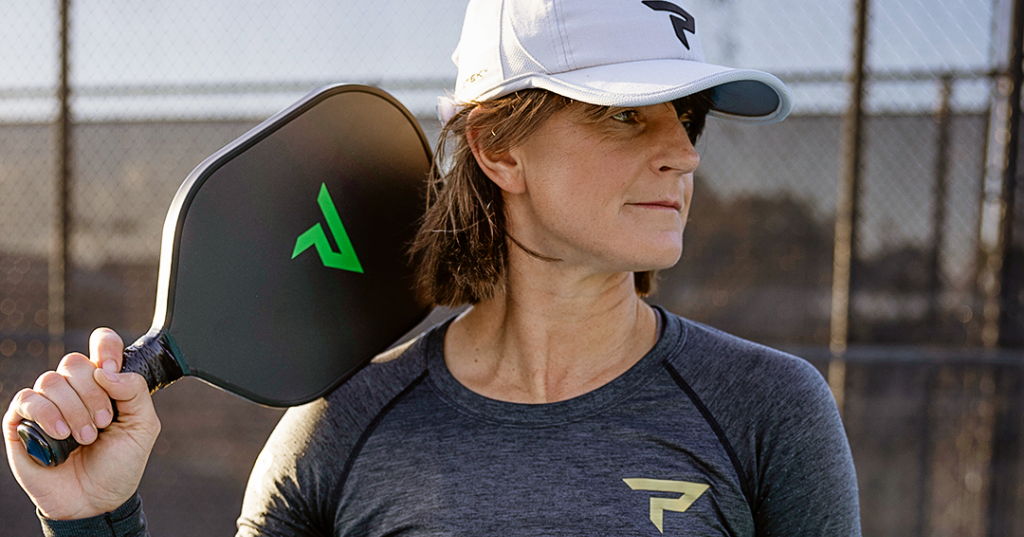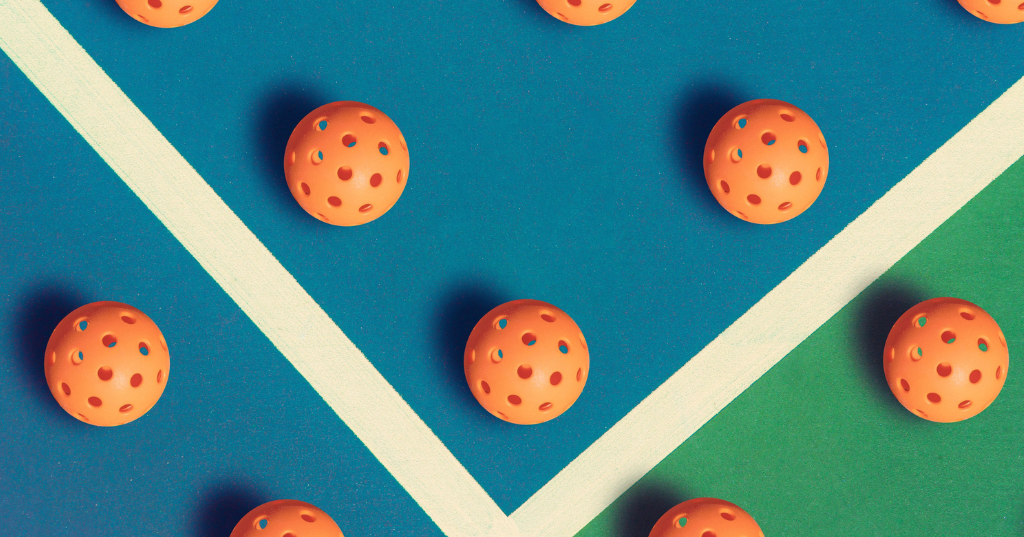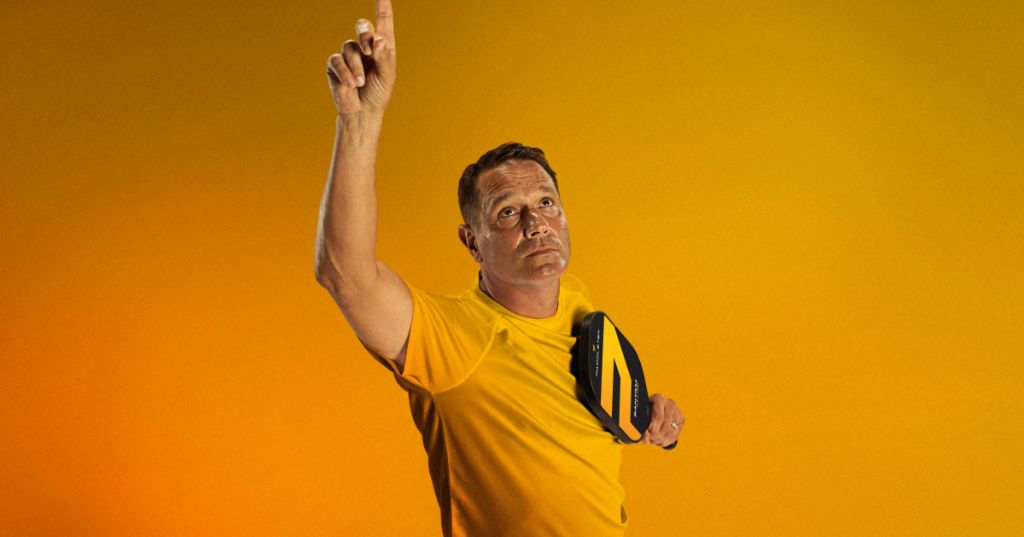Anyone who’s played pickleball for a while will tell you that winning requires patience, agility, and touch. All three of those qualities are hard to come by, and lacking them often leads to mistakes on the court, especially for new players. If you're just starting your pickleball journey, there are a few common but avoidable mistakes you're most likely making.
The most common beginner mistakes in pickleball can be divided into two categories: rules and technique. The good news is that these mistakes are easily identified and fixed, allowing beginner pickleball players to become better at the game with simple tweaks.
If you're getting frustrated with your pickleball performance, committing too many faults, or struggling to find an advantage during a rally, this article's for you. While mistakes are an inevitable part of learning pickleball, knowing the following 5 mistakes and our suggestions on how to fix them will shorten your learning curve.
Breaking the Rules
When you break the rules in pickleball, this causes your team to incur a fault and lose the rally. As such, winning requires mitigating faults while maintaining control of serving as much as possible.
Mastering the rules of pickleball is the simplest and most impactful way to minimize the number of unnecessary faults you commit and maintain serving possession. If you can commit the following 3 rules to memory and incorporate them into your playing, you'll see significant improvement in your game.
Mistake #1: Server Numbers
If you're new to pickleball, you're most likely committing a rookie mistake in doubles. And while it may seem like a throwaway component of pickleball, getting it wrong results in a fault.
The mistake in question revolves around server numbers and the serving sequence in doubles.
For new players in particular, server numbers can be extremely confusing. But they're foundational to the game. So mastering this is crucial to securing more wins.
If you struggle with server numbers, let's bring some clarity.
Server Numbers 101
In doubles, each player is assigned a server number, and many beginners are under the false assumption that their server number remains the same throughout the game. This isn’t the case at all! Here's what you need to know.
- The person who serves first is called the “first server” and is assigned the number 1.
- The person who serves second is called the “second server” and, you guessed it, is assigned the number 2.
- These server numbers can change throughout the game.
- The first server is always whichever player is located in the right service court when the other team has a side out, which is the moment a team loses control of serving and the other team gains possession of serving.
- Because the members of the serving team alternate sides each time they score a point (receiving side never alternates) the first server could be either player of the serving team at any point throughout the match. Remember, the first serve always comes from the right side!
Why Are Server Numbers Important?
Server numbers are important because they impact how a score is called in doubles. Because of USA Pickleball rule changes to serving in 4.K, if a player thinks an incorrect score has been called, they can stop play and ask for a score recall before the serve. If they do this after the serve, it's a fault.
If the score is wrong after the serve, then play should continue and the score will be amended before the next serve.
Basically, if you stop play because of a wrong score now, it's a fault. It's simply better to get the score right and call it before the serve.
And while calling the score is certainly a courtesy, it's also a requirement in USA Pickleball's Rulebook.
Since the server number is the third set of numbers in a double’s score line and is called as either a 1 or a 2. Therefore, knowing which member of your team is first server and which is second makes this far easier, as you must include the server number when calling the score before serving.
Mistake #2: Volleying in the Kitchen
The kitchen in pickleball—more formally known as the non-volley zone, or NVZ for short - is the seven feet directly on either side of the net, zoned by lines. The kitchen has extremely specific rules.
The Kitchen 101 and Why It's Important
The most important thing to know about the kitchen is that players may stand in the kitchen and hit in the kitchen during play, so long as the ball bounces before hitting it.
The several other rules surrounding the kitchen simply expand on this concept, dictating when and how a ball can enter the kitchen and what a player can do in it. Here's the gist of what causes the most mistakes for beginners though:
- No volleys are allowed in the kitchen. This prevents players from crowding the net and making the game unplayable.
- If you’re volleying and step into the kitchen or on the kitchen line, it's a fault.
- If you just volleyed and your body moves into the kitchen or touches the kitchen line, it's a fault.
- If anything you're wearing or carrying during and in the follow through of a volley, like your paddle or shirt, enters or touches the kitchen line, it's a fault.
- If a serve lands in the kitchen, even if it's on the receiving side’s court, it's a fault.
As you can see, the kitchen comes with a laundry list of rules. Getting any of them wrong will instantly fault your side. But as long you don’t serve the ball into the kitchen or volley from it, you’re in good shape.
These rules don't mean that you can't be in the kitchen -in USA Pickleball's Rulebook, section 9.F. states, A player may enter the non-volley zone at any time except when that player is volleying the ball. Again, no volleying in the kitchen, but outside of that, feel free to dip your toes into the non-volley zone.
The best thing to do is stand as close to the kitchen as possible without going into it. That way, if the ball does happen to bounce in the kitchen, you’re just a step away from a quick return. And if the ball is a volley, you’re allowed to hit it from where you’re standing.
Mistake #3: Not Honoring the Double Bounce
One of the most iconic rules in pickleball is the double-bounce rule. If you haven't heard of it (also referred to as the two-bounce rule), you might assume it means the ball has to bounce on the same side two times consecutively.
And while that is a fault in pickleball, the double-bounce rule is something different entirely.
Double Bounce 101
The double-bounce rule requires both sides of the court to let the ball bounce once on their side after the serve. Rule 7.A. states If the serve or service return does not bounce before the ball is struck. It is considered a fault.
The word double in the name refers to the ball bouncing twice in total after the serve, not twice on one side.
If that's still confusing, this is what it would look like in a sequence of playing.
- Serve: Serving team serves the ball.
- First Bounce: Receiving team lets the ball bounce once, then returns it to the serving team.
- Second Bounce: Serving team lets the ball bounce once, then returns it to the receiving team (this is also known as the third shot).
- Open Play: The ball has now bounced twice, and either team can volley or let it bounce once before returning it.
It's important to note that before the third shot, all bounces need to land in the service courts; the ball cannot bounce in the kitchen until the third shot starts open play.
Why is the Double Bounce Important?
If you return a serve without allowing the pickleball to bounce, this is a fault and gives the serving team a point. Similarly, if you're on the serving team and you don't allow the return to bounce, this is also a fault, which may result in rotating servers or a side out.
Now that we’ve covered the rules beginners are most likely to break, let’s explore two common technical issues that cause beginners to fault frequently.
Technique Tweaks for Improved Results
Techniques, like pickleball's rules, can make or break a game. Get them right, and you're positioned to win. But get them wrong, and you're entering a world of faults.
While it’s easy to spot when a pickleball rule is broken, thanks to its clear standards and enforcement, problems are less cut and dried when it comes to a player's technique.
However, fixing just two common technical issues can have a profound effect on improving a new player's game, helping them win more rallies, and limiting avoidable mistakes.
Mistake #4: Neglecting the Third-Shot Drop
The second groundstroke in the double bounce is referred to as the third shot. This is the shot where the serving team opens up play, which flags the moment when anyone can volley and the kitchen is open for business.
You’ll nearly always see the non-serving team sprint up to their kitchen line after their return shot because this gives them the best chance of spiking the ball after a poor third-shot return. So, what can the serving team do to prevent this from happening?
Well, there's a specific method of returning the ball on the third shot that can significantly improve the serving team’s chances of winning a rally, and it's one that many beginners are simply unaware of. It's called the third-shot drop.
Third-Shot Drop 101
The third-shot drop is a method of striking the ball in the second groundstroke of the double bounce, which gives the serving team as much time as possible to sprint toward the kitchen line.
The third-shot drop is performed by striking the ball so that it just barely clears the net and bounces as deep in the kitchen as possible, forcing the opposing team to have to return with an underhanded dink (a soft hit) that's far easier for the other team to deal with.
Why Is the Third-Shot Drop Important?
The third shot is the most vulnerable moment for a serving team since the receiving team is closer to the kitchen, giving them an advantage for rallying. The third-shot drop minimizes the receiving team's advantage by pushing them farther from the kitchen.
Many beginners aren’t even aware of the third-shot drop, so practicing and perfecting this technique can absolutely give you an edge in your games.
Mistake #5: Hovering in No-Man’s-Land
In pickleball, there are two ideal doubles court positions to stand in at nearly any given moment: the kitchen line and the baseline.
- Kitchen Line: This is the frontmost area you can stand before stepping into the kitchen. As long as you’re not in the kitchen or touching the kitchen line, you’re close enough to hit a ball that bounces in the kitchen but still able to legally hit a volley.
- Baseline: This is the line farthest away from the net where you can stand, which is perfect for receiving lobs and deep shots.
Anywhere else is considered no-man's-land, and it's never a good idea to be positioned there.
No Man's Land 101 and Why It's Important
Standing in no-man’s-land causes beginners and experienced players to commit several mistakes, making them vulnerable in many ways, including:
- Feet Shots: Standing in no-man’s-land is an open invitation for feet shots, where the opponent aims their bounce as close to your feet as possible. These shots are extremely difficult to return. Standing as close to or as far away from the net as possible minimizes the opponent’s opportunity to land these shots.
- Cross-Court Dinks: Floating in no-man's-land makes you vulnerable to cross-court dinks. If you're playing doubles and neither of you is on the kitchen line, your opponent can simply dink the ball into the corner of the kitchen and make it practically impossible to return.
If you're right next to the kitchen, an opponent could indeed lob the ball over your head, but this is a very risky shot for them. And unless they’re extremely capable with lobs, it would easily open the opportunity for your team to smash the ball back.
The best way for you and your partner to position yourselves is to have one or both of you on the kitchen line at all times. If you opt to have one there, make sure the other player is as far back as they can be to cover their partner in case they make a mistake.
Education and Practice Make Perfect
The nuances in pickleball can sometimes make it seem more complicated than it is, but the sport is still relatively simple to pick up. It's mastering the nuances that’s challenging. Overcoming these 5 beginner mistakes is just the starting point of that journey.
Honing your gameplay and minimizing simple mistakes can take you from a beginner to an intermediate player in a much shorter time than you may expect! Fixing these minor problems can transform a good player into a great one.



Leave a comment
This site is protected by hCaptcha and the hCaptcha Privacy Policy and Terms of Service apply.